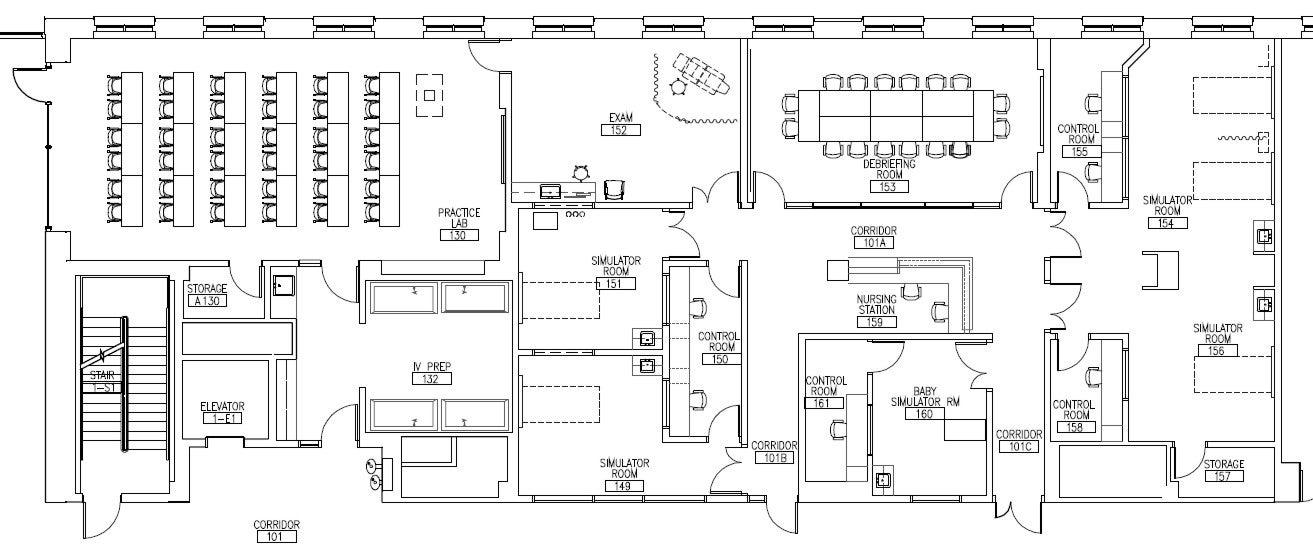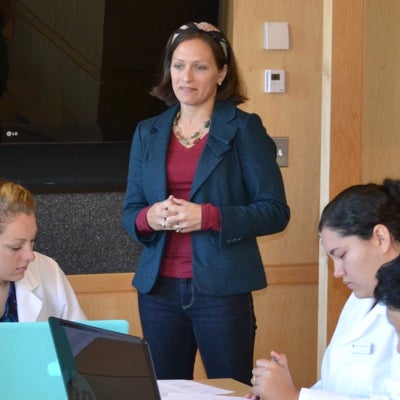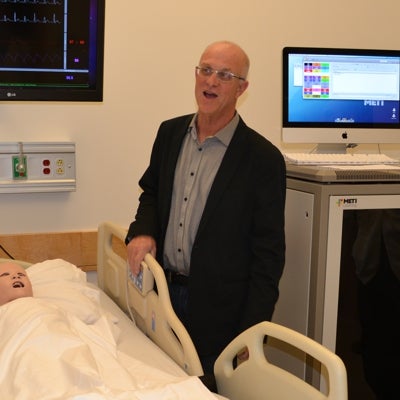Overview
The CVS Health Interdisciplinary Health Delivery Laboratory uses healthcare simulation to promote excellence in teaching, research, and healthcare delivery. The state-of-the-art hands-on simulation helps enhance student and group knowledge and responsiveness when practiced in realistic surroundings. These introductions to real-world situations help improve effective communication, collaborative teamwork, and situational management. The simulation lab provide students with an ideal platform for meaningful interdisciplinary collaboration, knowledge application, and skill development.
Medical simulation is an immersive educational resource changing the face of education for all health care professionals
Education for Quality Patient-Centered Care
The skill and commitment of numerous health professionals is required for optimal healthcare delivery in the United States. In many settings, improvements in patient outcomes and reduction of medical errors remain elusive. Alternative methods of educating students entering the health professions must be explored to ensure all health professionals embrace and deliver quality patient-centered care.
Our Mission
The Interdisciplinary Health Care Delivery Laboratory’s mission is founded upon the University’s guiding principles of a commitment to “research, scholarship, and creative work” where real-world “impact” and “innovation” remain the central focus. Our working model fits well with the University’s vision where all students “demonstrate models of learning and discovery.”
We successfully use medical simulation to engage the 21st century learner to bridge the gap between the basic and clinical sciences.
The types and forms of medical simulation used for educational purposes includes physiological-based high-fidelity simulators, low-fidelity mannequins, standardized patients, and even virtual reality. Our facility supports standardized patient actors, structured clinical encounters, and communication skill-building between health care workers and patients and their families.
Teaching
The simulation lab faculty use healthcare simulation to promote excellence in simulation-based education and teaching. With over a decade of experience in healthcare simulation, we are recognized experts in developing and integrating accurately modeled high-fidelity human patient simulations for the health professions.
Ongoing projects include creating sustainable interdisciplinary high-fidelity simulation-based curricula and programs for the university and regional healthcare community.
Doctor of Pharmacy Students
We have integrated our intensive, immersive simulation-based experiences for Doctor of Pharmacy students with our organ systems-based curriculum.
- P1 year—Illustration of basic physiologic and pharmacologic principles including autonomic pharmacology and management of complex disease states such as septic shock. IPPE hours are integrated into the P1/P2 curriculum.
- P2 year—Students practice physical assessment skills and formulate therapeutic recommendations for simulated patients with acute asthma and COPD exacerbations. Inter-professional CNS case studies are offered.
- P3 year—Simulation is used to foster communication, mutual understanding and teamwork between students from pharmacy, nursing, and medicine.
- P4 year—APPE students rotate through the simulation lab gaining clinical insight through modeling of complex disease states. Students complete this rotation by delivering the simulated case in a peer-to-peer setting.
BSPS Students
As a part of the BSPS instruction in Pharmacology the simulation laboratory is used to demonstrate drug effects. This highlights the program’s bench to bedside approach to drug development. BSPS students are also given the opportunity to do independent study in the simulation laboratory. In this situation students help to develop models of human disease and program new drugs into the patient simulators. This provides the students with an in-depth appreciation of both pharmacokinetics and pharmacodynamics.
Nursing & Allied Health
We also provide pharmacology-focused simulations for nursing, physical therapy, and kinesiology students.
Research
A central role of the simulation laboratory is encouraging research pursuits within the undergraduate and professional student population. Students are encouraged to employ simulation in a research context. This highly adaptable research model allows students to approach research methods in a format that is comfortable for today’s technology-driven learners.
A foundation in research offers students a lifelong method for addressing the problems and, perhaps more critically, provides the mapping required for devising effective solutions that will impact our local and global community.
About the Laboratory
Facility
The 3,025 sqft patient simulation laboratory is an integral part of the CVS Caremark Teaching Wing, which also houses the Professional Practice Lab. The laboratory is comprised of seven spaces:
- Debriefing room
- Nurse station
- 3 Private ICU rooms
- 2 ER Triage rooms
Equipment
Our Interdisciplinary Health Care Delivery Laboratory uses seven high-fidelity human patient simulations as an immersive educational tool that allows health care professionals to practice and improve critical skills that will translate to improved healthcare delivery.
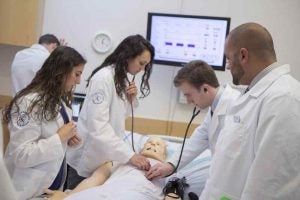 TestChest x1 - TestChest®, an innovative full physiologic artificial lung that provides a breakthrough in mechanical ventilation training. TestChest® has unique features in terms of representing complex breathing patterns through programmable driving pressure (p0.1) and respiratory rate. Muscular activity, important criteria for weaning, can be easily simulated.
TestChest x1 - TestChest®, an innovative full physiologic artificial lung that provides a breakthrough in mechanical ventilation training. TestChest® has unique features in terms of representing complex breathing patterns through programmable driving pressure (p0.1) and respiratory rate. Muscular activity, important criteria for weaning, can be easily simulated.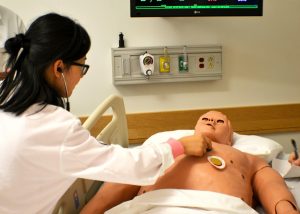 CAE Emergency Care Simulator x 2 - The ECS provides an anatomically correct, feature-rich mannequin, which allows for the physical demonstration of various clinical signs including bleeding, breathing, blinking eyes and convulsions. The human physiology models at the core of the ECS provide appropriate responses to treatment interventions, including airway and oxygenation management, fluid administration, defibrillation and the administration of drugs. Together, […]
CAE Emergency Care Simulator x 2 - The ECS provides an anatomically correct, feature-rich mannequin, which allows for the physical demonstration of various clinical signs including bleeding, breathing, blinking eyes and convulsions. The human physiology models at the core of the ECS provide appropriate responses to treatment interventions, including airway and oxygenation management, fluid administration, defibrillation and the administration of drugs. Together, […]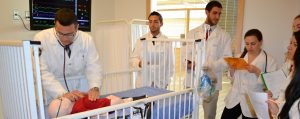 CAE BabySIM x 1 - The Baby SIM makes it possible to prepare students for interaction with our most vulnerable patients—in a safe, realistic learning environment. Intricate details such as realistic touch and feel clinched fists and a layer of baby fat help create an appropriate representation of a three- to six-month old infant. BabySIM allows critical care interventions—such as […]
CAE BabySIM x 1 - The Baby SIM makes it possible to prepare students for interaction with our most vulnerable patients—in a safe, realistic learning environment. Intricate details such as realistic touch and feel clinched fists and a layer of baby fat help create an appropriate representation of a three- to six-month old infant. BabySIM allows critical care interventions—such as […]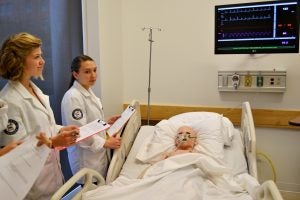 CAE PediaSIM x 1 - The Pedia SIM recognizes the minute but crucial differences that make pediatric medicine uniquely challenging – distinctions in anatomy, reactions to drugs, types of injuries and underlying physical conditions. Just as the HPS relies on highly precise computer modeling of human physiology and pharmacology, the PediaSim operates on the basis of delicately calibrated mathematical equations […]
CAE PediaSIM x 1 - The Pedia SIM recognizes the minute but crucial differences that make pediatric medicine uniquely challenging – distinctions in anatomy, reactions to drugs, types of injuries and underlying physical conditions. Just as the HPS relies on highly precise computer modeling of human physiology and pharmacology, the PediaSim operates on the basis of delicately calibrated mathematical equations […]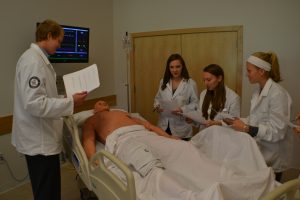 CAE Adult I-STAN x1 - Stan is one of the most advanced patient simulator, that mimic’s human cardiovascular, respiratory and neurological systems. When iStan bleeds, his blood pressure, heart rate and other clinical signs change automatically, and he responds to treatment with minimal input from an instructor. With a realistic airway, articulated joints and blood on board, iStan has full […]
CAE Adult I-STAN x1 - Stan is one of the most advanced patient simulator, that mimic’s human cardiovascular, respiratory and neurological systems. When iStan bleeds, his blood pressure, heart rate and other clinical signs change automatically, and he responds to treatment with minimal input from an instructor. With a realistic airway, articulated joints and blood on board, iStan has full […]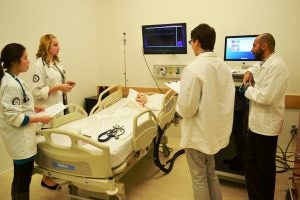 CAE Adult-HPS x1 - The Adult Human Patient Simulator (HPS) is a full-scale, fully interactive simulator that has human like physiological responses such as, heart beats, breathing, bowel sounds, cardiac rhythms, palpable pulses and computerized voices.
CAE Adult-HPS x1 - The Adult Human Patient Simulator (HPS) is a full-scale, fully interactive simulator that has human like physiological responses such as, heart beats, breathing, bowel sounds, cardiac rhythms, palpable pulses and computerized voices.- METI Pedi-HPS x1 - The Pedi Human Patient Simulator accurately mirrors human responses as well as breathes blinks and speaks as a human would. This HPS is the only patient simulator to provide respiratory gas exchange, anesthesia delivery, and patient monitoring with real physiological clinical monitors.
Contact
Sr. Lecturer and Co-Director
Interdisciplinary Health Delivery Simulation Laboratory
Professor and Co-Director
Interdisciplinary Health Delivery Simulation Laboratory

